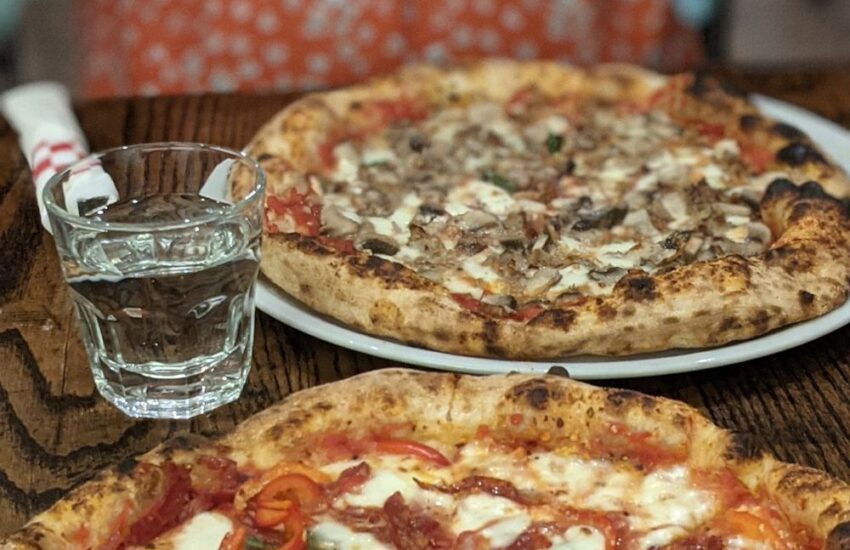I will never forget the first time a pizza truly made me stop and think. It was not from a cardboard box or delivered by a guy in a uniform. I was at this tiny, dimly-lit spot where the chef, a man with flour dusted up to his elbows, spent five minutes telling me about the history of his sourdough starter. He talked about the San Marzano tomatoes like they were precious gems. I took a bite, and the crust it was something else. It had a slight tang, a chewy yet airy texture, and a char that tasted like a campfire. It was a far cry from the uniform, floppy slices I had lived on in college. That single slice was my gateway into the world of artisanal pizza, and it completely reshaped what I thought this humble food could be. So, how did we get here? How did pizza, once the ultimate convenient food, become a canvas for culinary artistry? This shift towards gourmet pizza trends is not just a fad. It is a full-blown revolution with a very human desire for something real and crafted with care at its heart. This exploration of the gourmet pizza revolution digs into how quality ingredients and authentic methods are reshaping our slice culture, one wood-fired pie at a time.
I have come to see it as a pushback against the impersonal, the mass-produced, and the bland. We are hungry for connection, even in our food, and what is more connecting than sharing a beautifully made pizza? Let us be honest, for a while there, pizza became a bit predictable. You knew exactly what you were getting from the big chains, and while that has its place, it lost a sense of adventure. The rise of premium pizza market options speaks to a deeper change in what we want as consumers. We are not just looking to fill our stomachs; we are seeking an experience. We want to taste the story behind the food.
What defines this movement, at least for me, is the obsession over every single component. We are talking about dough that is not just mixed but nurtured, often fermented for 72 hours to develop a complex flavor you can actually taste. It is about a pizzaiolo who chooses a specific type of mozzarella di because the creaminess is unparalleled. This is not about piling on expensive ingredients; it is a fundamental rethinking of the craft. It asks the question: if we start with the best possible elements, how transcendent can this simple dish become? The answer, as it turns out, is very. And people, myself included, are clearly willing to pay a bit more for that journey. This is not just happening in fancy restaurants. The influence of these gourmet pizza trends has rippled out, changing the entire economic landscape of the pizza industry. Because these artisanal pies command higher prices, they have introduced a new tier of profitability that did not really exist before. Suddenly, offering a high-quality, artisanal pizza is a powerful way for a small restaurant to stand out in a sea of competition. I have noticed this even in my own city. A new artisanal spot opens, and it becomes a destination. It draws people into a neighborhood they might not have visited otherwise, boosting the local economy. It creates a buzz. This has forced everyone, even the big delivery chains, to sit up and take notice. Have you seen their menus lately? They are all launching “premium” and “chef-inspired” lines because the standard just will not cut it anymore. The artisanal movement has, in a very real way, raised the bar for everyone, which is a win for all of us who love pizza.

The spirit of the gourmet movement is one of boundless creativity. It has turned the pizza base into a platform for global flavors. I have seen pies topped with spicy Korean bulgogi and kimchi, or with delicate butternut squash and sage. Food trucks and pop-up tents are often the testing grounds for these wild, wonderful combinations, making gourmet pizza a vibrant part of our local dining culture. And what is truly fascinating is how this has trickled down to the supermarket freezer aisle. You can now find frozen pizzas with organic tomato sauce, gluten-free crusts, and plant-based pepperoni that are actually good. The demand for high-quality, restaurant-style pizza at home is a key driver in the frozen food sector, proving that the desire for a great pizza experience is not limited to a night out.
Manufacturers are paying attention, exploring options inspired by the very same regional and international cuisines that fuel the restaurant scene. Of course, this path is not without its bumps. Running an artisanal pizzeria is tough. When your entire model is built on the integrity of your ingredients, a bad tomato harvest in Italy or a spike in dairy costs can really squeeze your profits. You can not just swap in a cheaper cheese; your customers, people like me who have come to appreciate the difference, would notice. It is a constant balancing act between quality and affordability. Then there is the human element. This is not a job you can just hand to anyone. A true pizzaiolo is a skilled craftsperson. They need to understand fermentation, feel the dough, and read the heat of a wood-fired oven.
That expertise deserves a fair wage, which adds to the operational cost. In a world of intense competition, these small businesses have to be both culinary powerhouses and sharp, savvy operations to survive. For me, the most exciting part of this artisanal pizza wave is what it represents beyond the food itself. It is part of a larger conversation about sustainability and knowing where our food comes from. Many of these pizzerias proudly source from local farms, use organic produce, and seek out eco-friendly packaging. Your choice to eat there is not just about taste; it feels like a small, positive stand against industrial food production.
Furthermore, these places become community hubs. There is a warmth to them that a corporate chain can never replicate. Sitting at a counter, watching your pizza being made just for you, creates a connection. You are not just a customer; you are a guest. It fosters a sense of place and belonging, turning a simple meal into a shared experience. Looking ahead, one thing is clear: the gourmet and artisanal pizza movement has permanently changed the game. It has reminded us that pizza is not just a commodity, but a craft. It has proven that there is a deep and lasting appetite for food made with passion and purpose. The industry will continue to evolve, with new gourmet pizza trends emerging, but the core lesson is here to stay: when you care deeply about what you make, people can taste it.
References
Market Research Future. (2025). Pizza market demand, size, share, trend, research report 2035. https://www.marketresearchfuture.com/reports/pizza-market-11547
Stellar Market Research. (2025). Pizza market – size, share and industry forecast. https://www.stellarmr.com/report/Pizza-Market/1966
Your Pie Pizza Franchise. (2024). Pizza industry and fast casual dining statistics. https://franchise.yourpie.com/pizza-industry-and-fast-casual-dining-statistics/
Future Market Insights. (2025). Frozen pizza market size, trends and forecast 2025 to 2035. https://www.futuremarketinsights.com/reports/frozen-pizza-market
IBISWorld. (2025). Pizza restaurants in the US – market research report. https://www.ibisworld.com/united-states/industry/pizza-restaurants/4320/

